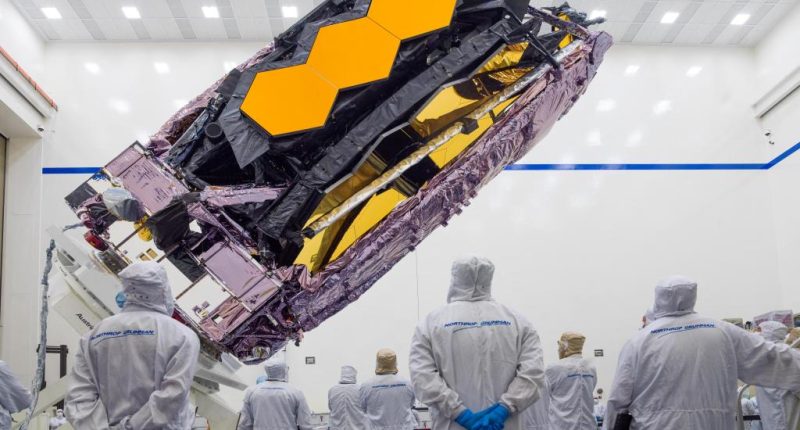Share this @internewscast.com

This discovery is out of this world.
The James Webb Space Telescope (JWST) has, for the first time since its operations commenced in 2021, captured a direct image of a new exoplanet — a planet that orbits beyond the solar system — which was published by the journal Nature.
This discovery marks a major breakthrough in astronomy and a “new step” in the ongoing search for planets that exist beyond our solar system.
This accomplishment was achieved by a group from France’s National Centre for Scientific Research (CNRS), operating at the Observatoire de Paris-PSL in collaboration with Université Grenoble Alpes.
From Earth, these planets appear directly next to bright stars, so their faint signals often get lost in the glare.
To achieve this, the CNRS team created a chronograph — a unique telegraphic tool for the JWST that obscures a star’s light, similar to how the Moon covers the Sun during a solar eclipse.
Named TWA 7b, the newly discovered planet is surrounded by a swirling disk of rocky debris and dust — remnants from the early stages of planet formation.
It orbits a young star, TWA 7, which has three distinct rings, one of which is especially narrow, and is surrounded by two empty areas. The JWST revealed a source within the heart of this narrow ring.
This exoplanet is 10 times smaller — roughly the size of Saturn — than any exoplanet previously observed using this method.
Which has to be tiny considering the JWST gave way to six distant “rogue” worlds, discovered by a team at Johns Hopkins University last summer.
At the time, researchers believed that these worlds were potentially brown dwarfs — the astronomical term for failed stars.
“If you have an object that looks like a young Jupiter, is it possible that it could have become a star under the right conditions?” said lead study author Adam Langeveld.
Other relevant discoveries made by the JWST around the same time provided data to researchers from the University of Michigan and Montreal to assume that there are potential oceans and air sources on the exoplanet dubbed LHS 1140 b, which is located within the constellation Cetus in the night sky.
Most exoplanets we know about have been detected using indirect methods like measuring a star’s wobble or dimming as a planet crosses in front of it — the method scientists artificially recreated to discover TWA 7 b.
In the bigger picture, learning how planets like TWA 7 b form and shape their surroundings brings us one step closer to understanding the origins of planetary systems, including our own.

















